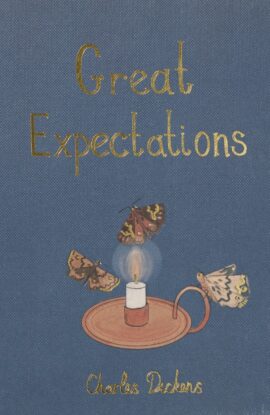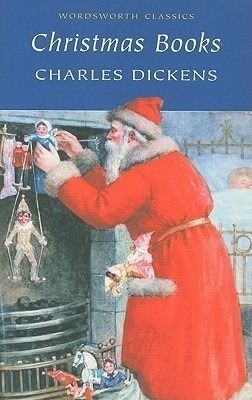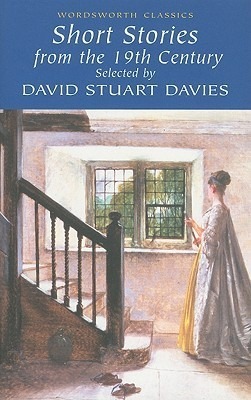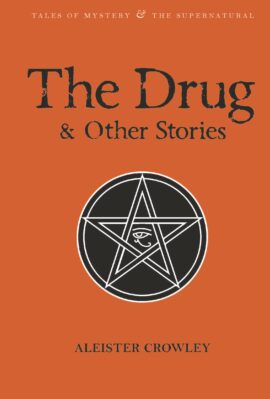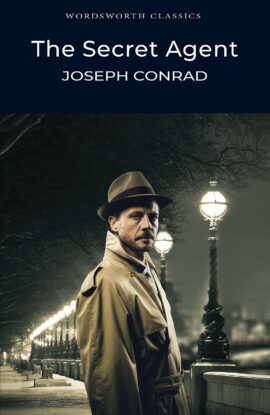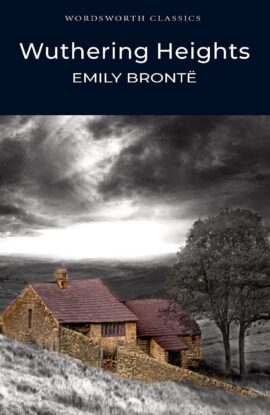Affichage de 126–150 sur 246 résultatsTrié par popularité
Great Expectations (Wordsworth Collector’s Editions)
Great Expectations by Charles Dickens. Considered by many to be Dickens' finest novel, Great Expectations traces the growth of the book's narrator, Philip Pirrip (Pip), from a boy of shallow dreams to a man with depth of character. From its famous dramatic opening on the bleak Kentish marshes, the story abounds with some of Dickens' most memorable characters. Among them are the kindly blacksmith Joe Gargery, the mysterious convict Abel Magwitch, the eccentric Miss Havisham and her beautiful ward Estella, Pip's good-hearted room-mate Herbert Pocket and the pompous Pumblechook. As Pip unravels the truth behind his own 'great expectations' in his quest to become a gentleman, the mysteries of the past and the convolutions of fate through a series of thrilling adventures serve to steer him towards maturity and his most important discovery of all - the truth about himself. Wordsworth Collector's Editions are compact cloth-bound hardbacks with matching coloured end papers, embossed gold and coloured blocking to enhance their beautiful, bespoke cover illustrations. Publication date: December 2020
Christmas Carol (Wordsworth Collector’s Editions)
Christmas Carol by Charles Dickens. A Christmas Carol is the most famous, heart-warming and chilling festive story of them all. In these pages we meet Ebenezer Scrooge, whose name is synonymous with greed and parsimony: 'Every idiot who goes about with Merry Christmas on his lips, should be boiled with his own pudding, and buried with a stake of holly through his heart'. This attitude is soon challenged when the ghost of his old partner, Jacob Marley, returns from the grave to haunt him on Christmas Eve. Scrooge is then visited in turn by three spirits of Christmas Past, Present and Future, each one revealing the error of his ways and gradually melting the frozen heart of this old miser, leading him towards his redemption. On the journey we take with Scrooge we encounter a rich array of Dickensian characters including the poor Cratchit family with the ailing Tiny Tim and the generous and jolly Fezziwig. When Charles Dickens wrote A Christmas Carol in 1843 he fashioned an enduring gift to the world, capturing the essence of the love, kindness and generosity of the Christmas season. It is a timeless classic and the story's uplifting magic remains as potent today as when it was first published. About our Collector's Editions: These new compact hardbacks will be cloth-bound, with matching coloured end papers, embossed gold and coloured blocking to enhance their beautiful, bespoke cover illustrations. The trim page size is 178 x 129mm.
Dickens Christmas Stories (Wordsworth Classics)
Bleak House (Wordsworth Classics)
Bleak House is one of Charles Dickens' finest achievements, establishing his reputation as a serious and mature novelist, as well as a brilliant comic writer. It is at once a complex mystery story that fully engages the reader in the work of detection, and an unforgettable indictment of an indifferent society. Its representations of a great city's underworld, and of the law's corruption and delay, draw upon the author's personal knowledge and experience. But it is his symbolic art that projects these things in a vision that embraces black comedy, cosmic farce, and tragic ruin. In a unique creative experiment, Dickens divides the narrative between his heroine, Esther Summerson, who is psychologically interesting in her own right, and an unnamed narrator whose perspective both complements and challenges hers. With an Introduction and Notes by Doreen Roberts, University of Kent at Canterbury
Robinson Crusoe (Wordsworth Collector’s Editions)
Robinson Crusoe by Daniel DefoeFrom its first publication in 1719, Robinson Crusoe has been printed in over 700 editions. It has inspired almost every conceivable kind of imitation and variation, and been the subject of plays, opera, cartoons, and computer games. The character of Crusoe has entered the consciousness of each succeeding generation as readers add their own interpretation to the adventures so thrillingly 'recorded' by Defoe.Praised by eminent figures such as Coleridge, Rousseau and Wordsworth, this perennially popular book was cited by Karl Marx in Das Kapital to illustrate economic theory. However it is readers of all ages over the last 280 years who have given Robinson Crusoe its abiding position as a classic tale of adventure.
Robinson Crusoe (Wordsworth Classics) (Wadsworth Collection)
With an Introduction and Notes by Doreen Roberts, Rutherford College, University of Kent at Canterbury From its first publication in 1719, Robinson Crusoe has been printed in over 700 editions. It has inspired almost every conceivable kind of imitation and variation, and been the subject of plays, opera, cartoons, and computer games. The character of Crusoe has entered the consciousness of each succeeding generation as readers add their own interpretation to the adventures so thrillingly 'recorded' by Defoe. Praised by eminent figures such as Coleridge, Rousseau and Wordsworth, this perennially popular book was cited by Karl Marx in Das Kapital to illustrate economic theory. However it is readers of all ages over the last 280 years who have given Robinson Crusoe its abiding position as a classic tale of adventure.
Selected Stories from the 19th Century (Wordsworth Classics)
Selected and Introduced by David Stuart Davies.Short Stories from the Nineteenth Century is a wonderful collection of classic stories specially selected and introduced by David Stuart Davies. These are tales from the golden age of the great storytellers presenting evocative snapshots from that bygone era while at the same time providing engaging entertainment and stimulation for the modern reader.All emotions are catered for in the offerings by Charles Dickens, Oscar Wilde, H.G.Wells, Arthur Conan Doyle, Robert Louis Stevenson, Bram Stoker, Mrs Gaskell, O Henry, Anthony Trollope, Thomas Hardy, Wilkie Collins, Guy de Maupassant, Anton Chekhov, Charlotte Perkins Gillman and Charles Lamb. Through their words the rich pageant of yesterday springs to vibrant life. Each story has its own introduction and there is a set of informative notes. This volume is ideal reading for the student as well as those who relish a good tale well told.
The Drug and Other Stories (Tales of Mystery & the Supernatural)
The Drug and Other Stories by Aleister Crowley. This revised and expanded second edition brings together the uncollected short fiction of the poet, writer and religious philosopher Aleister Crowley (1875-1947). Of the fifty-four stories in the present volume, only thirty-five were published in his lifetime. Most of the rest appear in this collection for the first time. Crowley was a successful critic, editor and author of fiction from 1908 to 1922. Like their author, his stories are fun, smart, witty, thought-provoking and sometimes unsettling. They are set in places in which he had lived, and knew well: Belle Epoque Paris, Edwardian London, pre-revolutionary Russia and America during the First World War. The title story The Drug stands as one of the first accounts -- if not the first -- of a psychedelic experience. His Black and Silver is a knowing early noir discovery that anticipates an entire genre. Atlantis is a masterpiece of occult fantasy that can stand with Samuel Butler's Erewhon. Frank Harris considered The Testament of Magdalen Blair the most terrifying tale ever written. This second edition adds several additional stories, including the Qabalistic allegory Ambrosii Magi Hortus Rosarum, featuring the author's previously unpublished annotations. Extensive editorial end-notes give full details about the stories.
The Last Of The Mohicans
Introduction and Notes by David Blair. University of Kent at Canterbury.It is 1757. Across north-eastern America the armies of Britain and France struggle for ascendancy. Their conflict, however, overlays older struggles between nations of native Americans for possession of the same lands and between the native peoples and white colonisers. Through these layers of conflict Cooper threads a thrilling narrative, in which Cora and Alice Munro, daughters of a British commander on the front line of the colonial war, attempt to join their father. Thwarted by Magua, the sinister 'Indian runner', they find help in the person of Hawkeye, the white woodsman, and his companions, the Mohican Chingachgook and Uncas, his son, the last of his tribe.Cooper's novel is full of vivid incident- pursuits through wild terrain, skirmishes, treachery and brutality- but reflects also on the interaction between the colonists and the native peoples. Through the character of Hawkeye, Cooper raises lasting questions about the practises of the American frontier and the eclipse of the indigenous cultures.
Word Structure and Spelling: Ages 10-11 (100% New Developing Literacy)
Secret Agent by Joseph Conrad. With an Introduction and Notes by Hugh Epstein, Secretary of the Joseph Conrad Society of Great Britain 'Then the vision of an enormous town prented itself, of a monstrous town...a cruel devourer of the world's light. There was room enough there to place any story, depth enough for any passion, variety enough there for any setting, darkness enough to bury five millions of lives.' Conrad's 'monstrous town' is London, and his story of espionage and counter-espionage, anarchists and embassies, is a detective story that becomes the story of Winnie Verloc's tenacity in maintaining her devotion to her peculiar and simple-minded brother, Stevie, as they pursue their very ordinary lives above a rather dubious shop in the back streets of Soho.
LORD JIM (PB) – WWC
Lord Jim by Joseph Conrad. Introduction and Notes by Susan Jones, St Hilda s College, Oxford First published in 1900, Lord Jim established Conrad as one of the great storytellers of the twentieth century. Set in the Malay Archipelago, the novel not only provides a gripping account of maritime adventure and romance, but also an exotic tale of the East. Its themes also challenge the conventions of nineteenth-century adventure fiction, confirming Conrad s place in literature as one of the first modernists of English letters. Lord Jim explores the dilemmas of conscience, of moral isolation, of loyalty and betrayal confronting a sensitive individual whose romantic quest for an honourable ideal are tested to the limit.
Heart Of Darkness And Other Stories
Introduction and Notes by Gene M. Moore, Universiteit van Amsterdam.Generally regarded as the pre-eminent work of Conrad's shorter fiction, Heart of Darkness is a chilling tale of horror which, as the author intended, is capable of many interpretations. Set in the Congo during the period of rapid colonial expansion in the 19th century, the story deals with the highly disturbing effects of economic, social and political exploitation of European and African societies and the cataclysmic behaviour this induced in some individuals.The other two stories in this book - Youth and The End of the Tether - concern the sea and those who sail upon it, a genre in which Conrad reigns supreme.
Woman in White (Tales of Mystery & the Supernatural)
Woman in White by W Collins. With an Introduction and Notes by Scott Brewster, University of Central Lancashire Wilkie Collins is a master of mystery, and The Woman in White is his first excursion into the genre. When the hero, Walter Hartright, on a moonlit night in north London, encounters a solitary, terrified and beautiful woman dressed in white, he feels impelled to solve the mystery of her distress. The intricate plot is peopled with a finely characterised cast, from the peevish invalid Mr Fairlie to the corpulent villain Count Fosco and the enigmatic woman herself.
[The Haunted Hotel & Other Stories (Tales of Mystery & the Supernatural)] [By: Wilkie Collins] [July, 2006]
Editedand with an Introduction by David Stuart Davies.'Have you ever heard of the fascination of terror?'This is a unique collection of strange stories from the cunning pen of Wilkie Collins, author of The Woman in White and The Moonstone. The star attraction is the novella The Haunted Hotel, a clever combination of detective and ghost story set in Venice, a city of grim waterways, dark shadows and death. The action takes place in an ancient palazzo coverted into a modern hotel that houses a grisly secret. The supernatural horror, relentless pace, tight narrative, and a doomed countess characterise and distinguish this powerful tale.The other stories present equally disturbing scenarios, which include ghosts, corpses that move, family curses and perhaps the most unusual of all, the Devil's spectacles, which bring a clarity of vision that can lead to madness.
On War (Wordsworth Classics of World Literature)
On War by Clausewitz is perhaps the greatest book ever written about war. Carl von Clausewitz, a Prussian soldier, had witnessed at first hand the immense destructive power of the French Revolutionary armies which swept across Europe between 1792 and 1815. His response was to write a comprehensive text covering every aspect of warfare. On War is both a philosophical and practical work in which Clausewitz defines the essential nature of war, debates the qualities of the great commander, assesses the relative strengths of defensive and offensive warfare, and - in highly controversial passages - considers the relationship between war and politics. His arguments are illustrated with vivid examples drawn from the campaigns of Frederick the Great and Napoleon Bonaparte. For the student of society as well as the military historian, On War remains a compelling and indispensable source.
The Awakening and Selected Stories (Wordsworth Classics)
The Awakening and Selected Stories by Kate Chopin. This is the first paperback edition to bring out in one volume Kate Chopin's extraordinary novel The Awakening (1899), along with the complete text of her two collections of short stories, Bayou Folk (1894) and A Night in Acadie (1897), and twelve uncollected tales. The Awakening is a strikingly modern, evocative story of self-discovery and female emancipation, set in the sensuous environment of Southern Louisiana, where the young Edna Pontellier reclaims her own individuality, refusing to be defined by her roles of wife and mother. Chopin's stories are brilliantly observed, compassionate and often humorous, alert to the foibles, weaknesses and small triumphs of her characters. Overshadowed by the relatively recent fame of The Awakening, they contain some of the best work of this remarkably original author.
The Canterbury Tales (Wordsworth Poetry Library)
The Canterbury Tales by Geoffrey Chaucer. During his life, Geoffrey Chaucer (born c.1340) was courtier, diplomat, revenue collector, administrator, negotiator, overseer of building projects, landowner and knight of the shire. He was servant, retainer, husband, friend and father, but is now mainly known as a poet and 'the father of English literature', a postion to which he was raised by other writers in the generation after his death. It was Boccaccio's Decameron which inspired Chaucer, in the 1390s, to begin work on The Canterbury Tales, which was still unfinished at his death in October 1400. It tells the story of a group of 30 pilgrims who meet at the Tabard Inn in Southwark, on the south bank of the Thames opposite the city of London, and travel together to visit the then famous shrine of St Thomas Becket in Canterbury cathedral. The tavern host, who accompanies them, suggests that they amuse one another along the way by telling stories, with the best storyteller awarded a meal in the tavern (paid for by all the others) on their return. The stories told by the pilgrims range from bawdy comedies through saints' lives and moral tracts to courtly romances, always delivered with a generous helping of Chaucer's own sly wit and ironic humour. Although basing his characters on the stereotypes of 'estates satire', Chaucer succeeds in his aim of producing an overview of his times and their culture, for posterity, in the manner of Italian, proto-Renaissance, writers.This transcription and edition is taken from British Library MS Harley 7334, produced within ten years of Chaucer's death. The on-page notes and glosses aim to enable readers with little or no previous experience of medieva
The King in Yellow (Tales of Mystery & the Supernatural)
The King in Yellow by Robert W. Chambers. With an Introduction by David Stuart Davies. I read it and reread it, and wept and laughed and trembled with horror which at all times assails me yet. With its strange, imaginative blend of horror, science fiction, romance and lyrical prose, Robert W. Chambers The King in Yellow is a classic masterpiece of weird fiction. This series of vaguely connected stories is linked by the presence of a monstrous and suppressed book which brings fright, madness and spectral tragedy to all those who read it. An air of futility and doom pervade these pages like a sweet insidious poison. Dare you read it? This collection has been called the most important book in American supernatural fiction between Poe and the moderns. H. P. Lovecraft, creator of the famed Cthulu mythos, whose own fiction was greatly influenced by this book stated that The King in Yellow achieves notable heights of cosmic fear.
Don Quixote (Wordsworth Classics)
Don Quixote by Miguel De Cervantes Saavedra. Cervantes tale of the deranged gentleman who turns knight-errant, tilts at windmills and battles with sheep in the service of the lady of his dreams, Dulcinea del Toboso, has fascinated generations of readers, and inspired other creative artists such as Flaubert, Picasso and Richard Strauss. The tall, thin knight and his short, fat squire, Sancho Panza, have found their way into films, cartoons and even computer games. Supposedly intended as a parody of the most popular escapist fiction of the day, the books of chivalry , this precursor of the modern novel broadened and deepened into a sophisticated, comic account of the contradictions of human nature. On his heroic journey Don Quixote meets characters of every class and condition, from the prostitute Maritornes, who is commended for her Christian charity, to the Knight of the Green Coat, who seems to embody some of the constraints of virtue.
Alice in Wonderland
Alice in Wonderland & Through the Looking-Glass by Lewis Carroll. With an Introduction and Notes by Michael Irwin, Professor of English Literature, University of Kent at Canterbury This selection of Carroll's works includes Alice's Adventures in Wonderland and its sequel, Through the Looking-Glass, both containing the famous illustrations by Sir John Tenniel. No greater books for children have ever been written. The simple language, dreamlike atmosphere, and fantastical characters are as appealing to young readers today as ever they were. Meanwhile, however, these apparently simple stories have become recognised as adult masterpieces, and extraordinary experiments, years ahead of their time, in Modernism and Surrealism. Through wordplay, parody and logical and philosophical puzzles, Carroll engenders a variety of sub-texts, teasing, ominous or melancholy. For all the surface playfulness there is meaning everywhere. The author reveals himself in glimpses.
Alice in Wonderland (Wordsworth Collector’s Editions)
Alice in Wonderland by Lewis Carroll. Tweedledum and Tweedledee, the Mad Hatter, the Cheshire Cat, the Red Queen and the White Rabbit all make their appearances, and are now familiar figures in writing, conversation and idiom. So too are Carroll's delightful verses such as The Walrus and the Carpenter and the inspired jargon of that masterly Wordsworthian parody, The Jabberwocky. With an Introduction and Notes by Michael Irwin, Professor of English Literature, University of Kent at Canterbury.
Alice in Wonderland (Wordsworth Exclusive Collection)
Alice in Wonderland by Lewis Carroll. This edition contains Alice's Adventures in Wonderland and its sequel Through the Looking Glass. It is illustrated throughout by Sir John Tenniel, whose drawings for the books add so much to the enjoyment of them. Tweedledum and Tweedledee, the Mad Hatter, the Cheshire Cat, the Red Queen and the White Rabbit all make their appearances, and are now familiar figures in writing, conversation and idiom. So too are Carroll's delightful verses such as The Walrus and the Carpenter and the inspired jargon of that masterly Wordsworthian parody, The Jabberwocky.
The Secret Garden (Wordsworth Collector’s Editions)
The Secret Garden by Frances Burnett is one of the best-loved stories of all time. Mary Lennox was horrid. Selfish and spoilt, she was sent to stay with her hunchback uncle in Yorkshire. She hated it. But when she finds the way into a secret garden and begins to tend to it, a change comes over her and her life. She meets and befriends a local boy, the talented Dickon, and comes across her sickly cousin Colin who had been kept hidden from her. Between them, the three children work astonishing magic in themselves and those around them.
The Complete Richard Hannay Stories (Wordsworth Classics)
The Complete Richard Hannay Stories by John Buchan. Major General Sir Richard Hannay is the fictional secret agent created by writer and diplomat John Buchan, who was himself an Intelligence officer during the First World War. The strong and silent type, combining the dour temperament of the Scot with the stiff upper lip of the Englishman, Hannay is pre-eminent among early spy-thriller heroes. Caught up in the first of these five gripping adventures just before the outbreak of war in 1914, he manages to thwart the enemy's evil plan and solve the mystery of the 'thirty-nine steps'. In Greenmantle, he undertakes a vital mission to prevent jihad in the Islamic Near East. Mr Standfast, set in the decisive months of 1917-18, is the novel in which Hannay, after a life lived 'wholly among men', finally falls in love: later, in The Three Hostages, he finds himself unravelling a kidnapping mystery with his wife's help. In the last adventure, The Island of Sheep, he is called upon to honour an old oath. A shrewd judge of men, he never dehumanises his enemy, and despite sharing some of the racial prejudices of his day, Richard Hannay is a worthy prototype hero of espionage fiction.
Wuthering Heights (Wordsworth Classics)
Wuthering Heights is a wild, passionate story of the intense and almost demonic love between Catherine Earnshaw and Heathcliff, a foundling adopted by Catherine's father. After Mr Earnshaw's death, Heathcliff is bullied and humiliated by Catherine's brother Hindley and wrongly believing that his love for Catherine is not reciprocated, leaves Wuthering Heights, only to return years later as a wealthy and polished man. He proceeds to exact a terrible revenge for his former miseries. The action of the story is chaotic and unremittingly violent, but the accomplished handling of a complex structure, the evocative descriptions of the lonely moorland setting and the poetic grandeur of vision combine to make this unique novel a masterpiece of English literature.




